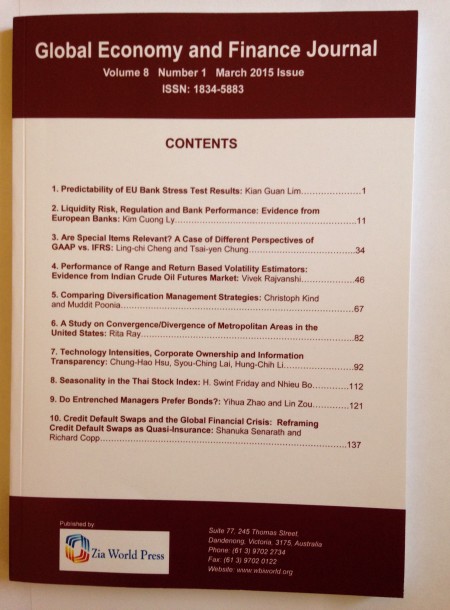Comparing Diversification Management Strategies

Global Economy and Finance Journal
Vol. 8. No. 1. , March 2015, Pages: 67 – 81Comparing Diversification Management Strategies
It is a well-known fact in finance that classical mean-variance optimization often leads to highly concentrated portfolios. Giving equal weights to all portfolio assets will instead allow for maximum nominal diversification. More sophisticated ways of nominal diversification are the maximum diversification approach proposed by Choueifaty & Coignard (2008) or the equal weighting of total risk contributions known as “risk parity”. Instead of looking for nominal diversification, investors may prefer a diversification of the risk factors that drive portfolio returns. In recent papers, risk factors have been modelled by principal components following Partovi & Caputo (2004). Meucci, Santangelo & Deguest (2013) show that principal components may not be the best way to model risk factors and propose “minimum torsion bets” instead. The present paper discusses these different ways of managing diversification and tries to identify the strengths and weaknesses of each strategy. For this purpose, we backtest the strategies in a multi-asset portfolio. The results show that a diversification of risk factors, when based on minimum torsion bets, leads to better risk-return characteristics than nominal diversification strategies.JEL Codes: G11
